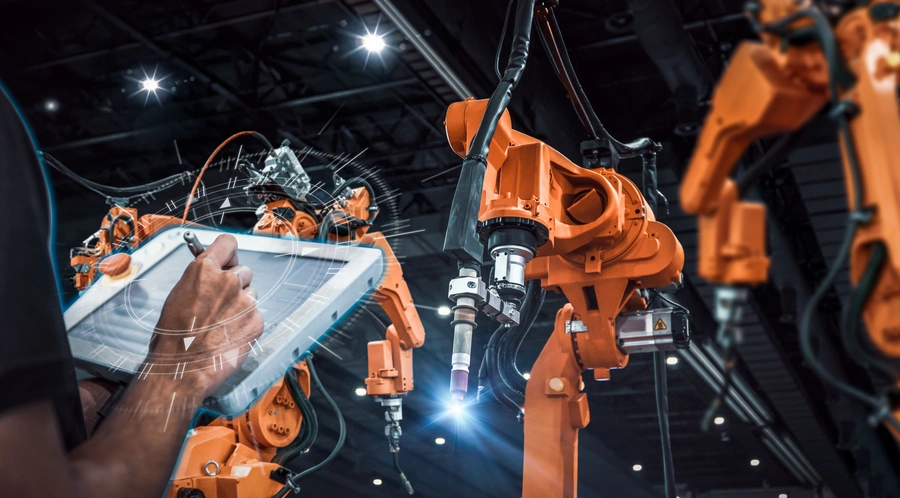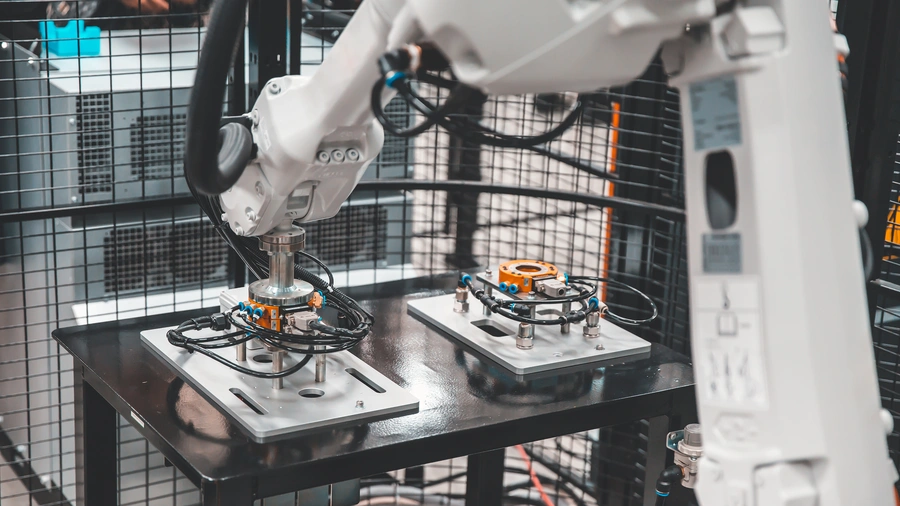
NEWSLETTER
Wpisz swój adres e-mail i zyskaj e-booka
Bez niechcianej poczty ani reklam
Tylko merytoryczne treści z obszaru digitalizacji produkcji

How to implement AI in a manufacturing company? Every time I hear this question, “Alice in Wonderland” comes to mind. What does one have in common with the other? Contrary to appearances, a lot. See for yourself!
New technology tempts – it promises competitive advantage, automation and time savings. But if we don’t know where we want to go, it’s easy to get lost. We are like Alice, who asked the Cheshire Cat, “Which way do I go?” and the quirky creature answered: “It depends on where you want to go.” Let’s listen to the Cat and before we start implementing AI, let’s ask what our destination is.

Artificial intelligence does not operate in a vacuum. Any AI system relies on four elements: data, algorithms, interface and infrastructure. Let’s take a look at each of these pillars.
Models learn from documents, machine logs, images or sensor records. In practice, it is the preparation of data that can sometimes be the most expensive and time-consuming stage of implementing artificial intelligence in a manufacturing company.
Today, algorithms are widely available in the form of open libraries. With them, we can create linguistic, predictive or analytical models tailored to business needs.
It can take the form of a chatbot, a panel with suggestions, or a system that supports a manager’s decisions. It is the interface that makes AI “user-friendly.”
Infrastructure consists of servers, cloud, security and computing power. Most often underestimated, and without them the whole project under the title of implementing AI in a company quickly derails.

Back in the 1960s, it cost… $1 million to save 1 MB of data. Today we pay pennies for terabytes in the cloud. It was the drop in storage costs and computing power that paved the way for the popularization of artificial intelligence.
Just look at the rate of adoption: ChatGPT gained 100 million users in just two months, while it took Uber six years. And yet, despite such a spectacular start, only one in 20 people in the world today actively uses AI.
In practice, this means one thing: the industry is just beginning this journey.

Get 5 chapters of the book for free!
Join the newsletter and gain access to 40% of the book
“15 Steps to Buying an Information System“.
Open models are tempting in price and ease of implementation. However, such AI solutions have three drawbacks that should not be ignored:
If I had to name the single most common mistake of manufacturing companies that want to invest in IT solutions, I would list the focus on functions rather than the business goal. My antidote to this problem is the 0-5 method, which involves a five-step implementation of new technologies:
Only then is it worth thinking about fully implementing an IT or artificial intelligence solution.

Imagine a manufacturing plant where technicians spend hours searching for machine documentation. Instructions are scattered, versioning doesn’t work, and each downtime counts in the tens of thousands.
The solution? A dedicated language model that learned only from company documents. Cost of implementation: PLN 70k + PLN 2k per month for the cloud. The result: an 80% reduction in search time. The return on investment came after 8 months.
This is an example that well-implemented artificial intelligence not only works – but pays for itself very quickly.
While the implementation ofAI may seemingly resemble Alice in Wonderland’s journey, the reality is that artificial intelligence in industry has nothing to do with magic. It’s a tool that works when we combine data, purpose and process. And when, instead of blindly chasing the bunny, we stop for a moment and ask the question, “Why are we doing this?” we can achieve a lot.